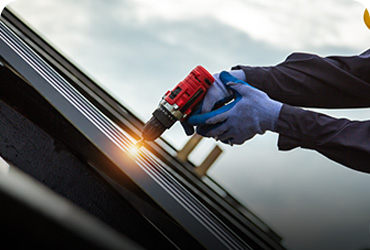Roof replacement Facts
Roof replacement is a significant investment, but it is an important one for the long-term health and protection of your home or business. In this post, we will delve into the details of roof replacement, explaining what it is, when it is necessary, and how to go about it.
Roof replacement is the process of removing an existing roof and installing a new one in its place. It is typically necessary when a roof has reached the end of its lifespan or has sustained significant damage that cannot be repaired. Roof replacement can involve the removal of the old roofing material, repair of any damaged decking, and installation of new underlayment and flashing, as well as the new roofing material itself.
To ensure that your new roof stays in good condition, it is important to perform regular maintenance and repairs as needed. This may include cleaning the roof and gutters.
There are several signs that a roof may need to be replaced. One of the most obvious is if the roof has reached the end of its lifespan. Most roofing materials have a lifespan of 20-30 years, depending on the type of material and the quality of the installation. If your roof is older than this, it may be time to consider replacement. Other signs that your roof may need to be replaced.
Before beginning the roof replacement process, it is important to properly prepare. This includes getting multiple estimates from reputable contractors, setting a budget, and obtaining any necessary permits. It may also be a good idea to remove any valuables or personal items from the attic or upper floors to protect them during the replacement process.


Choosing a reputable and experienced roofing contractor is an important step in the roof replacement process. It is important to do your research and get multiple estimates before making a decision.
The roof replacement process can take anywhere from a few days to a week or more, depending on the size and complexity of the roof.



